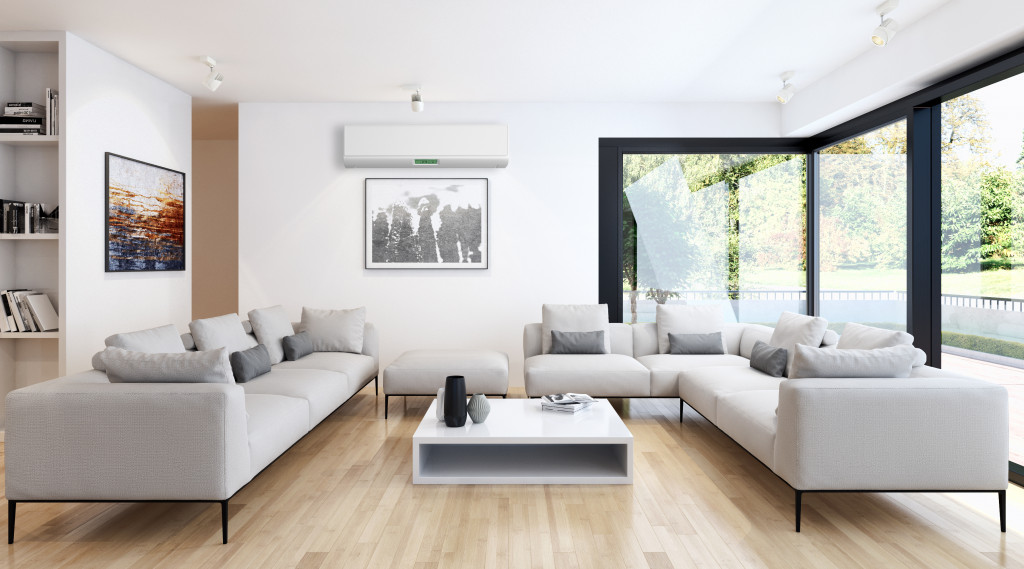- Choose light colors to reflect natural light, making the room feel brighter and more open.
- Use mirrors to amplify natural light and create interesting visual effects. You can place mirrors in front of windows.
- You should invest in energy-efficient windows for maximum insulation and to reduce air infiltration.
- Add window treatments such as sheer curtains, cellular shades, Roman shades, or window film to diffuse glare and control heat.
- Combine natural and artificial light sources for a layered effect that is flexible and functional.
What’s not to love about natural light? It’s free, abundant, and makes your home feel bigger, fresher, and more inviting. However, if you are relying solely on overhead lighting—or worse, heavy drapes and curtains—to illuminate your home, you may be missing out on a world of benefits that only natural light can offer.
From mood improvement and better sleep patterns to energy savings and an eco-friendlier home, natural light has many advantages for homeowners who know how to use it creatively. In this blog, you will learn tips on making the most out of natural light in your home, no matter your budget or style.
Choose light colors.
Light colors—in particular, white, cream, pastel, and neutral shades—reflect natural light and make the room feel brighter and more open. Dark colors, on the other hand, absorb light and make the room look smaller and more cramped.
When choosing wall paint, furniture, and fabrics, opt for light colors that complement each other and create a harmonious ambiance. If you want to add some pops of color, do so sparingly and strategically, using accent pillows, rugs, or artwork.
Play with mirrors.
Mirrors are one of the best tools to amplify natural light in your home. By reflecting and bouncing light, mirrors can make a dark room feel brighter and more spacious. They can also create interesting visual effects and focal points.
You can place mirrors strategically in front of windows, on walls, or even on the ceiling, depending on your preferences and the layout of the room. Just make sure not to overdo it, as too many mirrors can create a dizzying effect.
Invest in energy-efficient windows.

Energy-efficient windows are designed to maximize natural light while keeping your home warm in the winter and cool in the summer. If you can, invest in replacing your old windows with energy-efficient models that offer optimal insulation and reduce air infiltration. This will help you save on heating and cooling costs, as well as make your home more comfortable all year round.
If you already have energy-efficient windows, just make sure they’re in good condition to take full advantage of their benefits. Clean the windows regularly and check for any signs of damage, such as broken seals or air leaks. If you do spot damages, call in a professional window repair service provider immediately. They can inspect existing windows to determine the condition of the glass, make necessary repairs, and replace worn or damaged parts.
Add window treatments.
While heavy drapes and curtains can block natural light, light-filtering window treatments can enhance it by diffusing glare, controlling heat, and adding ambiance. Some options to consider include the following:
Sheer curtains
Sheer curtains are a great way to balance privacy and light. They let in plenty of natural light while still preserving your home’s coziness and intimacy.
Cellular shades
These are the perfect choice if you want to adjust the amount of natural light entering the room without sacrificing style or elegance.
Roman shades
Roman shades offer greater insulation, blocking out heat during summer and keeping the room warm during winter. Roman shades also come in a variety of fabrics and colors, so you can easily find a style that complements your home’s décor.
Window film
Window film is an affordable, effective solution for homes that require more privacy. It comes in a variety of styles and can also help increase energy efficiency.
When choosing window treatments, keep in mind the orientation of the windows, the amount of privacy and light control you need, and the style of the room.
Combine natural and artificial light.

Natural light may be the most desirable type of illumination, but it’s not always available or sufficient. That’s why it’s essential to supplement it with the right kind and amount of artificial light, such as LED bulbs, table lamps, or track lighting.
Combining natural and artificial light allows you to create a layered, flexible, and functional lighting scheme that adapts to your activities and mood. For instance, you may use daylight for reading, studying, or working and artificial light for watching TV, entertaining, or relaxing.
Bringing natural light into your home can be a great way to save money, improve the ambiance of your space, and make it feel more inviting. While you may not have control over the amount of sunlight that comes in through windows or skylights, there are still plenty of ways to maximize its potential.
From choosing lighter colors and adding mirrors to investing in energy-efficient windows and combining natural with artificial light sources, these tips should help you create a brighter atmosphere at home while saving on electricity bills. With some creativity and careful planning, you’ll soon enjoy all the benefits of using natural light creatively!




